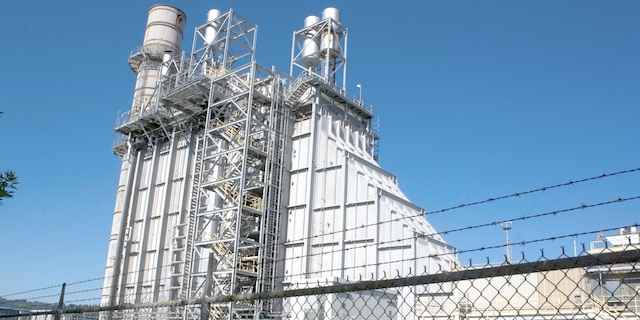Energy Department: U.S. heading toward more blackouts by 2030
Published 2:34 pm Thursday, July 24, 2025

- A Puget Sound Energy natural gas power plant generates electricity in Longview, Wash. Washington requires electric utilities to phase out natural gas power by 2045. The U.S. Department of Energy says such policies will increase blackouts. (Don Jenkins/Capital Press)
Blackouts could increase a hundredfold by 2030 if the U.S. continues to close coal and natural gas plants and fails to replace them with other on-demand power sources, according to a new Department of Energy report.
The grid reliability report reflects the Trump administration’s embrace of fossil fuels and takes aim at state policies that call for an increasing share of electricity to come from wind and solar.
Absent intervention, the nation’s power grid will be unable to meet the demand of industries and data centers needed to win the artificial intelligence arms race, according to the report.
Trending
“This report affirms what we already know: The United States cannot afford to continue down the unstable and dangerous path of energy subtraction previous leaders pursued, forcing the closure of baseload power like coal and natural gas,” Energy Secretary Chris Wright said in a statement.
President Trump directed the Energy Department to do the report, which borrowed from a previous study by the North American Electric Reliability Corp. The report looked at planned closures of coal and natural gas plants and projected what would happen if they were almost entirely replaced by wind and solar installations.
All regions of the U.S. will be more vulnerable to blackouts, according to the report. Hours of inadequate power nationwide would increase to 817 hours a year from the current eight hours, according to the report.
The risk of blackouts would vary by region. In California, power shortages could increase to seven hours from zero hours now. In a large part of the West, including Oregon, Idaho and Washington, blackouts could average nearly 18 hours a year. Other parts of the country, particularly portions of the Northeast, would be more prone to blackouts, according to the report.
Washington’s clean-energy law requires utilities to phase out coal and natural gas. The state’s only coal plant will close at the end of the year. The law doesn’t outright forbid new natural gas plants, but the prospects for building one are “highly suspect,” said Nicolas Garcia, Washington Public Utility Districts Association policy director.
“I’m not sure how one would go about putting one on the ground given today’s regulatory environment,” he said.
Trending
Washington has come close to having too little electricity in recent years during extraordinary cold spells and heat waves. The Energy Department study confirms other grid reliability forecasts and shouldn’t be dismissed as a partisan report, said Kurt Miller, Northwest Public Power Association executive director.
Washington state’s energy policy has been “climate-centric,” but should shift to “reliability-centric,” he said.
“I think our policy currently lacks balance,” Miller said. “The new state policy should be that before we shut down any on-demand generation there has to be something with similar characteristics to take its place.”
Washington’s official energy strategy, developed by the state Department of Commerce, counts on Montana and Wyoming transmitting massive amounts of wind energy via new transmission lines by mid-century.
“We are relying on actions in other parts of the country to keep our lights on, and that’s a bit of a concern,” Garcia said.
The state energy strategy continues to provide valuable guidance to policy makers, Amelia Lamb, Commerce Department spokeswoman said in an email.
“We continue to see that the best path to affordable and reliable energy for our families and our economy is one built on energy efficiency, gradual conversion to electricity for transportation, buildings and industry, and expansion of our transmission and clean power generation system,” she said.
Even if Montana and Wyoming were willing to supply wind power to Washington, federal intervention may hold them back.
The One Big Beautiful Bill Act will terminate tax credits for wind and solar projects that begin construction after 2027. Trump has signed executive orders to increase coal production and ordered federal agencies to withhold permits for new wind projects.
The order has shut down wind development and threatens state climate goals, according to a federal lawsuit by blue states, including Oregon and Washington.







